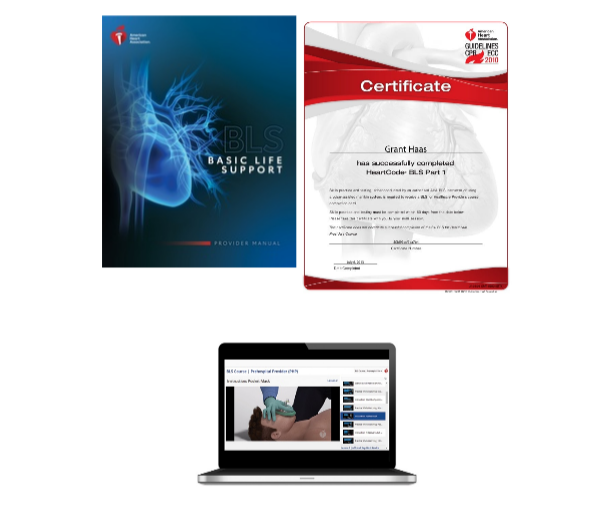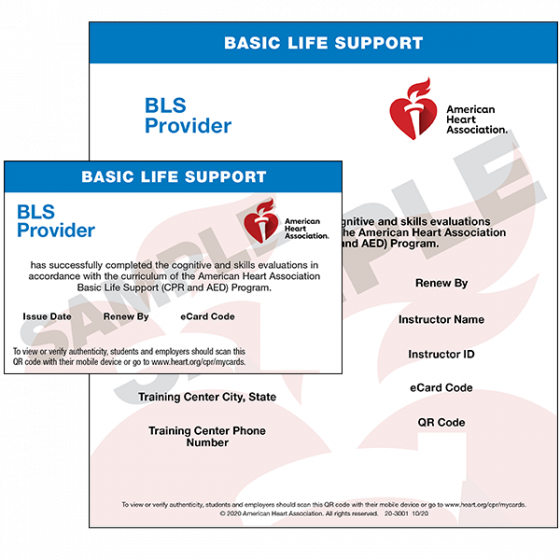
The AHA’s BLS course trains participants to promptly recognize several life-threatening
emergencies, give high-quality chest compressions, deliver appropriate ventilations and
provide early use of an AED. Reflects science and education from the American Heart
Association Guidelines Update for CPR and Emergency Cardiovascular Care (ECC).
Who should take this course?
The AHA’s BLS Course is designed for healthcare professionals and other personnel who
need to know how to perform CPR and other basic cardiovascular life support skills in a wide
variety of in-facility and prehospital settings.
What does this course teach?
- High-quality CPR for adults, children, and infants
- The AHA Chain of Survival, specifically the BLS components
- Important early use of an AED
- Effective ventilations using a barrier device
- Importance of teams in multirescuer resuscitation and performance as an effective team member during multirescuer CPR
- Relief of foreign-body airway obstruction (choking) for adults and infants
Basic Life Support (BLS) Course Options :
Classroom BLS
instructor-led, hands-on class format reinforces skills proficiency
The BLS Instructor-led course teaches both single-rescuer and team basic life support skills
for application in both prehospital and in-facility environments, with a focus on High-Quality
CPR and team dynamics.
Blended Learning HeartCode(r) BLS
Blended Learning (online portion, followed by hands-on skills session)
session) HeartCode
BLS uses a variety of eLearning assets such as dramatizations, eSimulations, animations, self-
directed learning, and interactive activities to teach students BLS knowledge and skills.
HeartCode BLS is the AHA’s BLS blended learning delivery method. Blended learning is a
combination of eLearning, in which a student completes part of the course in a self-directed
manner, followed by a hands-on skills session.
Complete the online portion + hands-on skills session with an AHA Instructor, or with a
voice-assisted manikin (VAM) or Simulation Station


